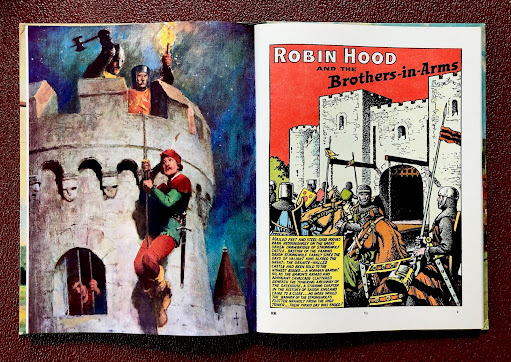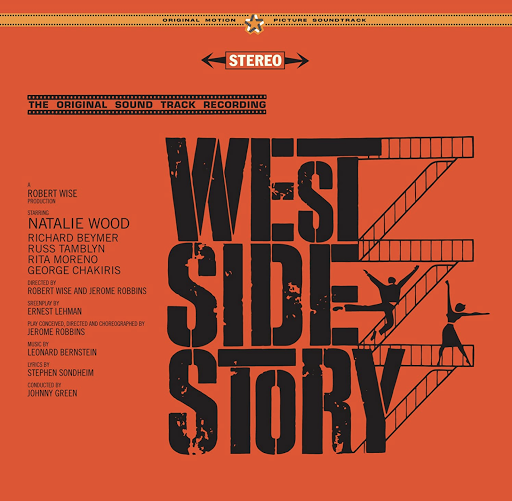It’s 6.00 am on 25th December 1957, Christmas
morning, and my eight-year-old year self is plunging excitedly into a small
pillowcase of surprises which Santa has left at the end of my bed…
It won’t take long to pillage this horde for we are not a
well-off family, but after registering the ubiquitous tangerine, a handful of
nuts and gold-foil-covered chocolate coins – I seize on
rectangular package that instantly declares itself to be a BOOK!
Shredding the holly-and-robins wrapping-paper, I catch my
breath and my eyes open wider than wide…
ROBIN HOOD Annual 1958…
There are no words to express my joy and delight! Exciting
full-page colour illustrations, picture-strip stories, ‘proper stories’ with lots and lots of words and historical
information of the kind that every amateur medievalist needs to know!
I instinctively know that this book will not just be a Christmas feast, but will be my
constant sustenance for many months to come: poring over those glossy paintings
of deeds of derring-do, reading, re-reading,
and locking away all the stories and pictures in my memory bank…
What else would I do? Robin Hood was already the hero of my
young life avidly following his black-and-white adventures on TV’s The Adventures of Robin Hood with the
dashing Richard Greene as the swashbuckling hero, Robin of Sherwood.
Robin provided the favourite game of my contemporaries and
myself: running wild as ‘outlaws’ and ‘sheriff’s men’ among the woods
surrounding our little country junior school.
Already the aspiring thespian, director and impresario, I
plotted and choreographed the various scenarios of our childish play and – with
my gabardine raincoat worn like a cloak (and secured with the top button under
my chin) – I cast myself not, as you
might suppose, in the role of Robin, but as the Sheriff of Nottingham in honour
of Alan Wheatley whose suave but dastardly TV portrayal of Robin’s nemesis had totally
captivated me –– doubtless because there was about his performance a certain quality
that I would now define as elegant and sardonic camp!
Anyway, sadly – somewhere in the mists of time – we were
parted, the Robin Hood Annual 1958 and
I.
One of the personal effects of the Covid-19 pandemic has sent me back, across
the years, to relive (and often struggle with) the events of my childhood that
would, later, shape my life, my emotional development (or lack of it) and,
inevitably, my career…
Many of these mental encounters have been painful:
reassessing the relationship between my parents and between them and I, or helping
me understand my childhood passions for things – especially books, music and
films – and my youthful crushes that, in the culture of the times, I and the
subjects of my love, had no way of understanding or managing…
In their turn, these meditative excursions have led me to
try and reclaim some of those objects that were a pivotal part of the process
of mapping the journey of where I came from and how I got to where I am now.
I have spasmodically scoured the Internet for a copy of that
Robin Hood Annual and now, wonder of
wonders, I have secured a copy that is so near-mint as to feel as though it was
the very one that I excitedly unwrapped, that Christmas morning almost
sixty-three years ago!
Turning the pages, I am eight years old again and
swashbuckling my way through the chivalric romance of an age that never
actually was, but, without question, should
have been!
I can now also pinpoint perhaps the very earliest
recognition of my still-to-burgeon sexuality as (in the very first story,
‘Robin Hood and the Mystery of the Mill’) I read as I remember reading back
then with a curious sensation of excitement:
“The summer sun shone brightly down upon the lush green of
Sherwood, glancing from the dappled leaves and setting the forest streams
a-sparkle.”
[Not bad vocabulary
for a comic book! But to continue…]
“Upon this splendid morn, bold Robin Hood peeled of his garb
of Lincoln green and scarlet … and plunged headlong into the cooling waters.”
A page or two later (having lost his ‘garb’ to a passing
thief!) Robin, bare-chested and, for modesty’s sake, “clad in pair borrowed
breeches” set out to exact revenge!
I suspect that, even then, the die was cast!
Anyway, now we are back together again, after an eternity,
and what an unmitigated joy it is to follow the book’s opening invitation to…
“Turn the pages and be carried back to… THE DAYS OF ROBIN
HOOD.”
Lovers of the Nottingham hero may like to tune-in to a radio
programme, Back to the Greenwood, celebrating
the films of Robin Hood made in
the year in which two rival screen
versions were produced.
Written
and presented by Brian Sibley
Contributors:
Patrick Bergin, Bob Bushaway, Sean Connery, Alan Frank, John Irvin, Richard
Lester, Mike McShane, Jeffrey Richards and Richard Todd.
First Broadcast on 'Kaleidoscope', BBC Radio 4, 16 February 1991.
Produced by
Adrian Washbourne
Follow the golden arrow to this link: BACK TO THE GREENWOOD



























